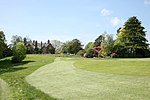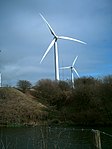Kirkby Ireleth
Civil parishes in CumbriaCumbria geography stubsSouth Lakeland District

Kirkby Ireleth is a civil parish in the South Lakeland district of the English county of Cumbria. It includes the villages of Grizebeck and Kirkby-in-Furness - which is really a collection of six different hamlets, namely: Soutergate, Wall End, Beck Side, Sand Side, Marshside and Chapels; and other outlying settlements including Bailiff Ground, Gargreave, Friars' Ground, Beanthwaite, Dove Bank, Dove Ford and Woodland. The parish had a population of 1,247 at the 2001 Census. At the 2011 census Kirkby Ireleth was grouped with Angerton giving a total population of 1,174.
Excerpt from the Wikipedia article Kirkby Ireleth (License: CC BY-SA 3.0, Authors, Images).Kirkby Ireleth
Green Road Bridleway (Public Rights of Way across Duddon Sands are dangerous. Seek local Guidance. See note),
Geographical coordinates (GPS) Address Nearby Places Show on map
Geographical coordinates (GPS)
| Latitude | Longitude |
|---|---|
| N 54.232 ° | E -3.19 ° |
Address
Green Road Bridleway (Public Rights of Way across Duddon Sands are dangerous. Seek local Guidance. See note)
Green Road Bridleway (Public Rights of Way across Duddon Sands are dangerous. Seek local Guidance. See note)
LA17 7TA , Kirkby Ireleth
England, United Kingdom
Open on Google Maps











